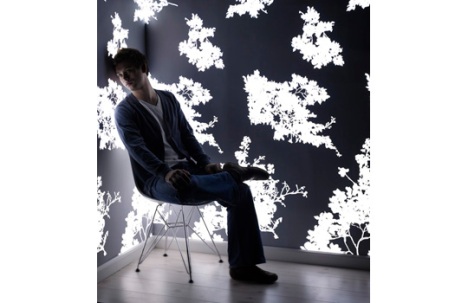
Light-emitting wallpaper design by Jonas Samson; Image courtesy of Nuno Michael Ferreira on sbkinc.com
Lomox’s glowing walls are achieved through use of a chemical coating that is triggered by a small electrical current. Since only 3-5 volts of electricity are required to power the product, the walls remain safe to touch and can even be powered by solar panels or batteries. The company claims that this technology is 2.5 times more efficient than energy-saving light bulbs. Consumers can buy pre-treated wallpaper or paint the chemical directly on the walls. Regular dimmer switches control the level of light produced. A natural sunlit glow fills the room, providing a full range of color and eliminating the shadow and glare associated with traditional forms of lighting.
There have been mixed responses to this news release. Some potential consumers are worried about the toxicity of the chemical and how concerned they should be about crumbling paint. Others are less-than-enthusiastic about the prospect of no shadows, citing fear of a sterile, cold atmosphere. Technophiles, on the other hand, see only bigger and better possibilities for the lighting. Think of the patterns you could create in your homes! Jonas Samson, designer, has already released light-emitting wallpaper, demonstrating just a small spectrum of possibilities. One commentator even suggested glow-in-the-dark pages for books. Good luck getting the kids to sleep when “lights out” isn’t as easy as it sounds!
Sources/Images:
http://www.timesonline.co.uk/tol/news/science/article6970927.ece#cid=OTC-RSS&attr=797084
http://www.sbkinc.com/weblog/2007/11/northern_lights_dutch_wallpape.html
Filed under: Daily Dose of Masonry | Tagged: daily dose, glowing walls, interior design, LED light, light bulb, linkedin, wallpaper | Leave a comment »













